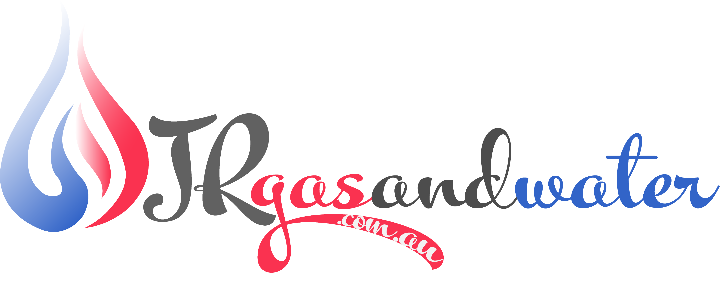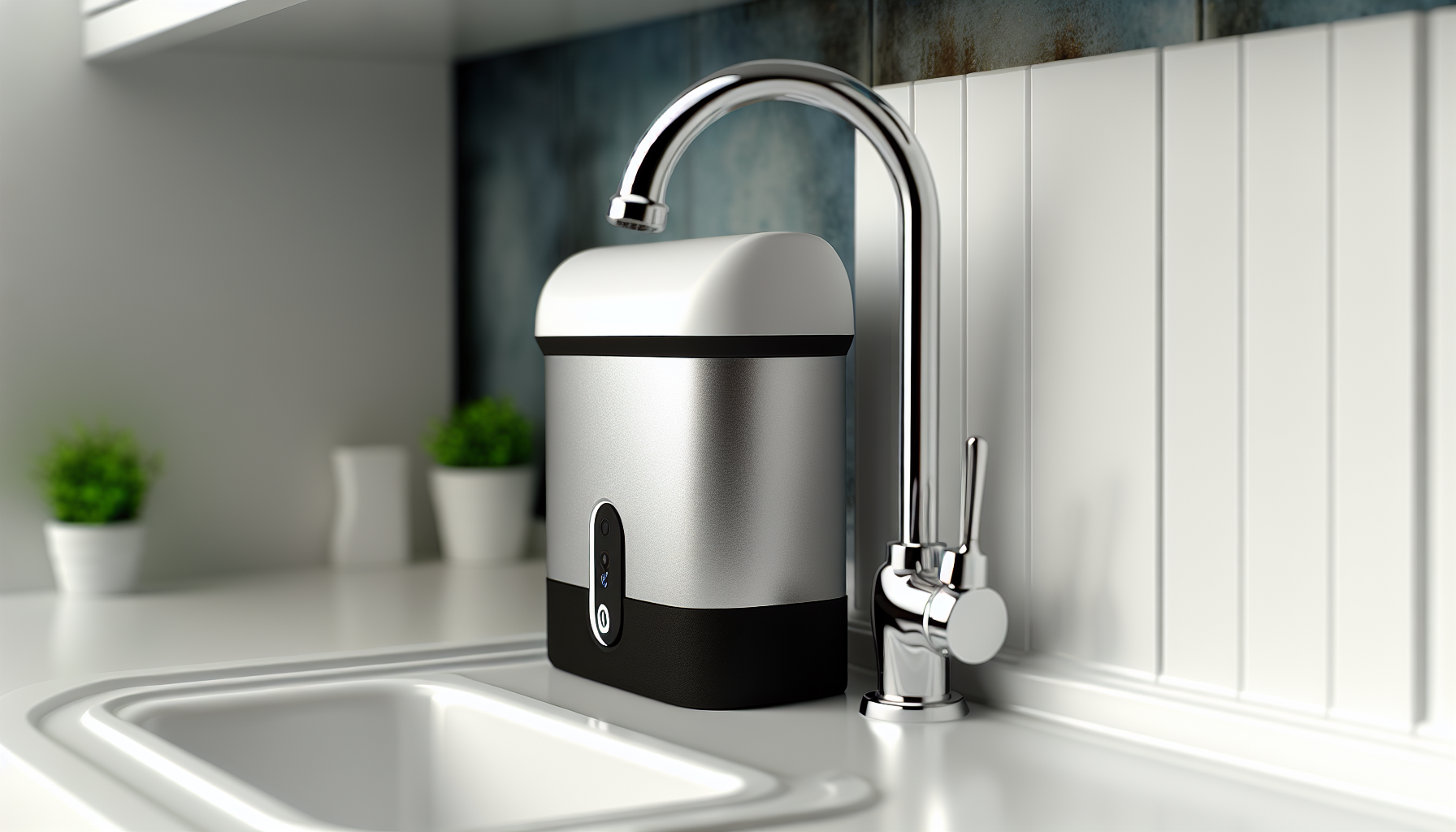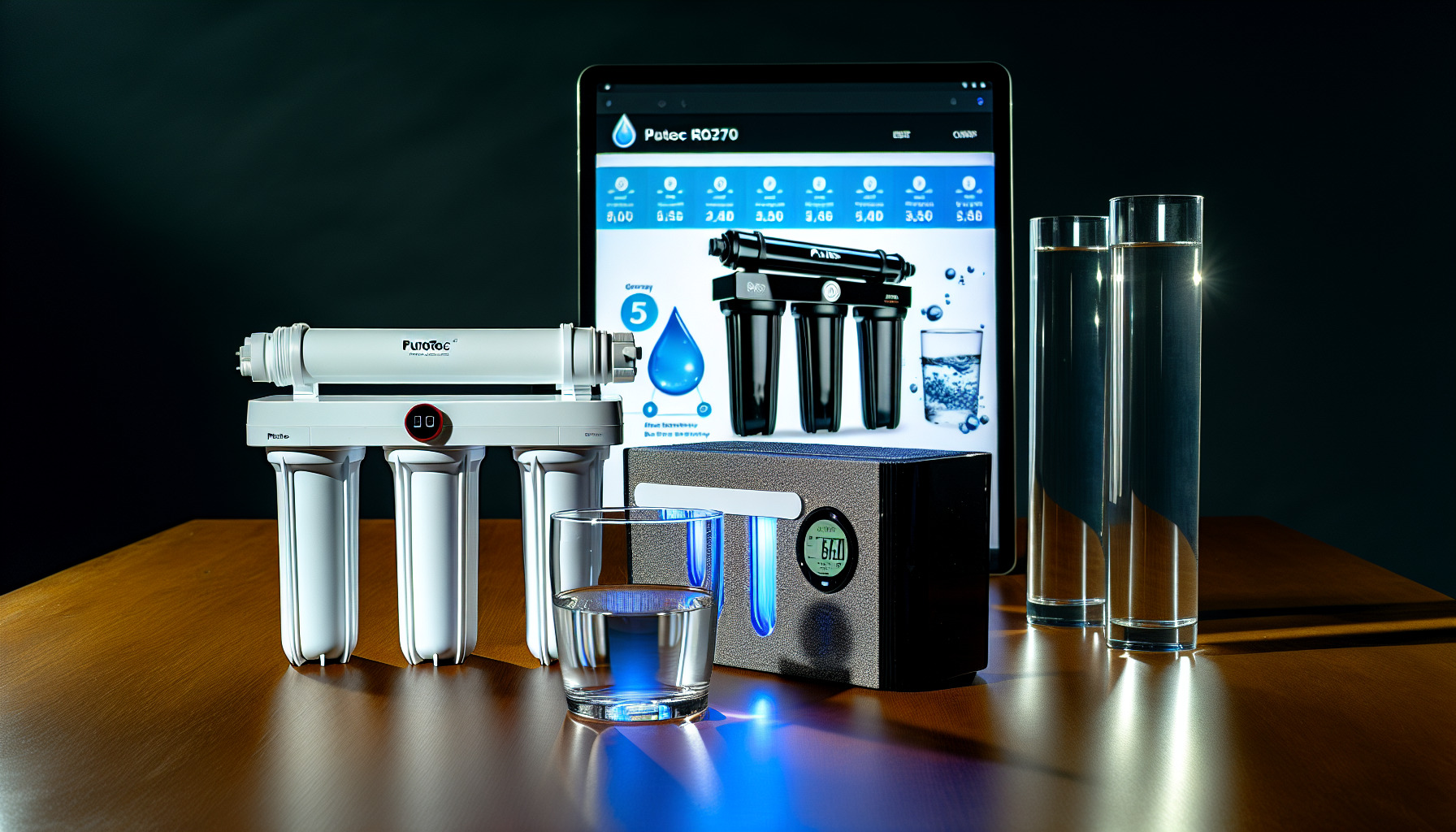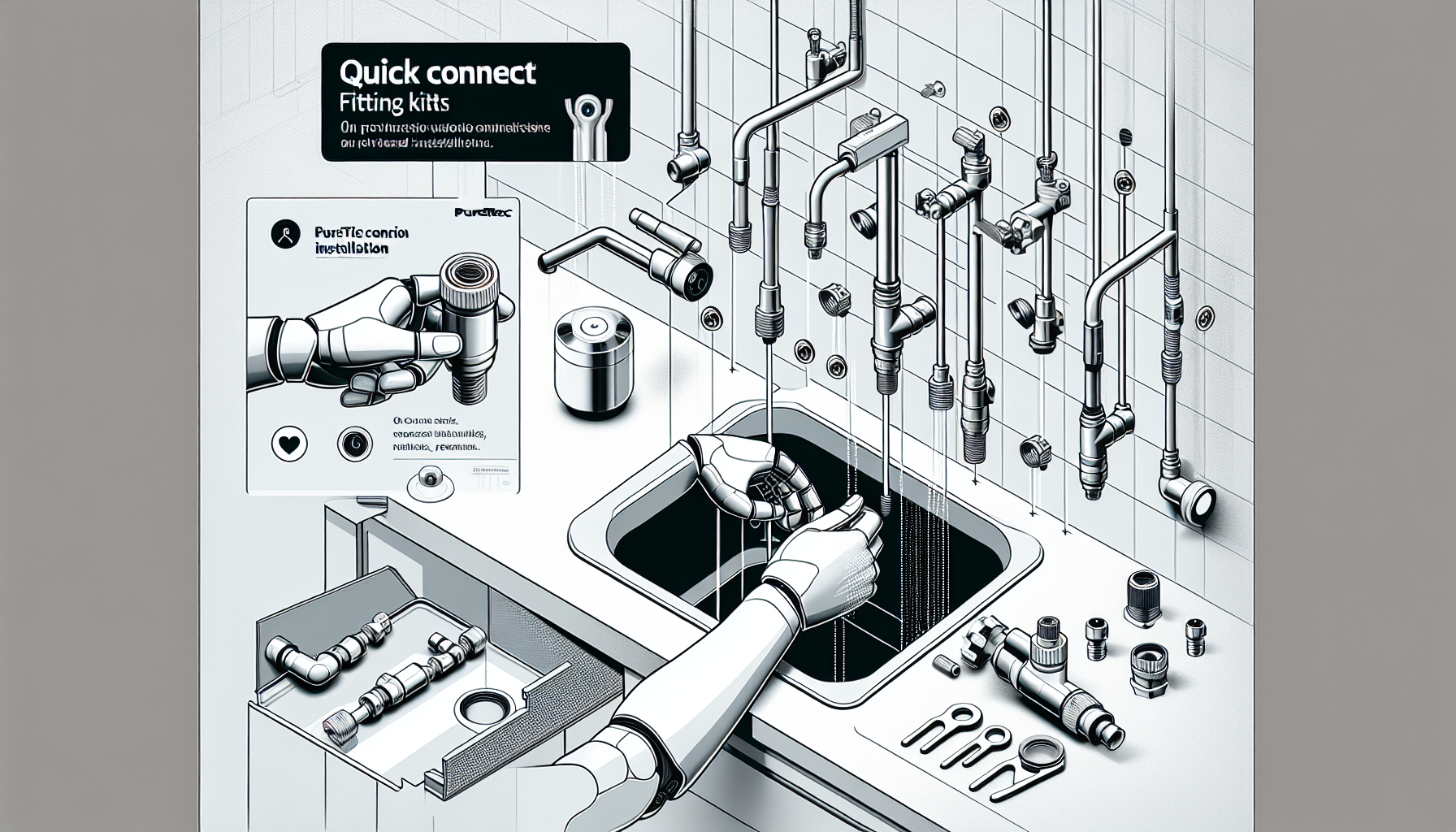Need to Add That Perfect 3-in-1 (Hot/Cold/Filtered) Mixer Tap to Your New Filtration System?
View allExperience Pure Hydration with the Puretec RO270: A Leader in Reverse Osmosis Water Filtration
Are you contemplating the move to crystal-clear drinking water at home? The Puretec RO270 is a high-capacity reverse osmosis water filter designed to deliver up to 270 liters of purified water daily, making it an exceptional option for discerning homeowners. With a state-of-the-art 4-stage filtration system, this unit promises to reduce a wide array of contaminants, ensuring safe, taste-enhanced water straight from your tap. Let’s explore the features, installation, and long-term benefits that make the Puretec RO270 a standout in home water filtration.
Key Takeaways
-
The Puretec RO270 is a highly efficient reverse osmosis filtration system capable of producing up to 270 liters of purified water daily, featuring a four-stage filtration process with a 0.0005 micron RO membrane for superior contaminant removal.
-
This system is designed for easy installation and maintenance, offering a space-saving design ideal for home use, simplified filter replacement with an LED reminder light, and an eco-friendly approach to water purification with minimal waste production.
-
The Puretec RO270 stands out through its capabilities to improve the drinking water experience by removing 98% of dissolved solids, including harmful contaminants, heavy metals, and chemicals, thus enhancing the taste and purity of water.
Exploring the Puretec RO270 Reverse Osmosis System
In the realm of reverse osmosis systems, the Puretec RO270 holds a distinct position. It’s an ultra-efficient system, employing a 0.0005 micron RO membrane that is adept at rejecting a broad range of impurities. Imagine having up to 270 liters of purified water at your disposal every day, thanks to osmosis water filter systems like this one.
Plus, with a 3-year Platinum Protection Warranty, your investment is safeguarded.
Understanding the 4-Stage Filtration Process
The 4-Stage filtration process of the Puretec RO270 includes:
-
Sediment filter
-
Carbon filter
-
RO membrane
-
Post-carbon filter
Each stage plays a critical role in removing bacteria, viruses, and chemical impurities.
The RO membrane, in particular, with its fine 0.0005 micron rating, significantly contributes to water purity.
The Role of High Efficiency in Water Production
The commitment of the Puretec RO270 to efficient water production is what renders it truly impressive. This system is designed to minimize waste, aligning with modern eco-friendly water purification standards.
This combination of minimal waste and high-efficiency filtration makes the Puretec RO270 an environmentally conscious choice for consumers seeking pure drinking water.
Key Advantages of Choosing the Puretec RO270 for Your Home
Beyond being a mere water filtration system, the Puretec RO270 serves as a dependable purification solution, making it ideal for households. With the ability to produce up to 270 liters of purified water daily and a 3-year warranty, it’s a system you can trust.
Its compact design, coupled with an easy-to-use installation kit, ensures a straightforward setup process.
Space-Saving Design for Convenient Installation
The space-efficient design of the Puretec RO270 is one of its standout features. It fits perfectly under your kitchen sink, allowing you to maximize your space without compromising on performance.
With system dimensions of 380 x 355 x 140 mm, you can rest assured knowing it’s a compact form that can fit even in the tightest of corners.
Simplified Maintenance for Long-Term Reliability
The Puretec RO270 alleviates concerns about complicated maintenance routines. The system features long-life filter technology, reducing the frequency of filter replacements and enhancing maintenance efficiency. Moreover, its integrated flushing system is designed to avert bacteria accumulation, ensuring both high water quality and long-term system reliability.
The premium ceramic disc faucet is equipped with an LED reminder light that notifies when it’s time for filter replacement. This means you won’t have to keep track of when you last changed your filters – the system will do it for you!
How the Puretec RO270 Enhances Your Drinking Water Experience
Beyond filtering water, the Puretec RO270 enhances the quality of your drinking water experience. With its ability to remove 98% of dissolved solids, it significantly reduces the presence of harmful contaminants in your drinking water.
Plus, by filtering out common contaminants, your water is free from off-tastes and odors, providing a superior drinking experience.
Taste Perfection: Removing Unwanted Flavors and Odors
Imagine sipping on water that’s free of unpleasant flavors or odors. With the Puretec RO270, that’s exactly what you get. The system eliminates contaminants like:
-
chlorine
-
tastes
-
odors
-
chemicals
Resulting in cleaner and better-tasting bottled water from a reliable water supply.
Your water isn’t just purified; it’s perfected.
Ensuring Purity: Contaminant Removal Capabilities
The Puretec RO270 offers thorough purification of your water. The system eliminates 98% of all dissolved impurities, including:
-
Heavy metals
-
Salts
-
Viruses
-
Bacteria
-
Cysts
-
Fluoride
-
Chloride
-
Chlorine
-
Taste
-
Odor
-
Chemicals
This ensures highly purified water.
This water filter systems even demonstrates a strong ability to remove fluoride and nitrates, which are significant contaminants in drinking water cases.
Comparing the Puretec RO270 with Other RO Water Filters
Amongst reverse osmosis water filters, the Puretec RO270 occupies a unique position. But how does it stack up against other RO systems? Let’s delve into a performance comparison.
Performance Comparison: Filtration Quality and Speed
The quality of filtration offered by the Puretec RO270 is second to none. The system has a filtration rating of 0.0005 microns, which allows it to remove up to 98% of impurities including:
-
Heavy metals
-
Salts
-
Viruses
-
Bacteria
-
Cysts
-
Fluoride
-
Chloride
-
Chlorine
-
Taste
-
Odor
-
Chemicals
It’s a filtration powerhouse!
When it comes to speed, the Puretec RO270 stands out as well. While reverse osmosis systems typically output purified water at a rate of about 8 liters per hour due to the fine filtration provided by the reverse osmosis membrane, the Puretec RO270 has a maximum flow rate of 20 liters per day, indicating a slower production speed in comparison to the typical output of other reverse osmosis systems.
Efficiency Showdown: Water and Energy Usage
The Puretec RO270 stands out in the area of efficiency, a critical factor when selecting reverse osmosis water systems. The reverse osmosis water filter is a key component of the reverse osmosis system, which includes an automatic shut-off valve and integrated flushing to prevent bacteria build-up. This can contribute to water conservation by limiting the amount of water flushed away. Plus, with a 7-liter storage tank, the system can potentially lead to less water wastage compared to systems that do not include a storage tank.
When it comes to energy usage, the Puretec RO270 is designed with efficiency in mind. It’s capable of purifying up to 2,725 litres (720 gallons) of water per day, highlighting its high production capacity compared to other RO systems that might have lower daily output rates. Plus, it has a high recovery rate, meaning less water is sent to the drain, making it more water-efficient than many other RO systems with lower recovery rates.
Technical Insights: Understanding the Puretec RO270's Specifications
The Puretec RO270 transcends being merely a water filtration system; it embodies a technological powerhouse. It operates within a water pressure range of 300 kPa to 870 kPa, handles water hardness up to 171 mg/L, and can serve you faithfully for 10 to 15 years.
Navigating Water Pressure Needs
The Puretec RO270 requires backpressure for efficient operation. The system is designed to function effectively across a wide pressure range from 300 to 870 kPa, catering to various water pressure conditions encountered in households.
For the system to function properly, the ideal pressure for an empty tank should be maintained at 34 to 48 kPa (5 to 7 psi).
Total Dissolved Solids (TDS) Reduction Explained
Designed to handle various contamination levels, the Puretec RO270 is highly adaptable. It can handle a minimum TDS of 50 mg/L and a maximum TDS of 2000 mg/L, and can reduce total dissolved solids in water.
Its ultra-fine reverse osmosis membrane, with a 0.0005 micron rating, contributes significantly to the high purity of the water, as reverse osmosis removes various contaminants.
Filter Lifespan and Replacement Indicators
Ease of maintenance is a key design consideration of the Puretec RO270. The sediment and reverse osmosis filter should be replaced every 6 months, while the reverse osmosis membrane should be replaced every 18 to 24 months, depending on incoming water quality. The system even includes an LED reminder light on the faucet for timely filter replacement.
Installation and Setup Guide for the Puretec RO270
The installation of the Puretec RO270 includes:
-
A simple installation kit complete with a holding tank
-
A ¼” turn ceramic disc faucet with an LED reminder light for filter replacement
-
Straightforward setup for immediate use
DIY Installation Steps
For DIY enthusiasts, the installation of the Puretec RO270 presents a straightforward task. A ½ inch hole is required for the dedicated faucet, which can be drilled using a center punch for accurate positioning. After this, you’ll need to select an appropriate location for the system’s dedicated faucet, considering convenience and accessibility.
Once you’ve got your location sorted, refer to the detailed parts diagram provided in the installation manual to become familiar with the components you’ll be working with. You’ll also need to use the included spanner wrench to unscrew the filter housings and open the membrane housing by hand as part of the setup.
When to Call the Professionals
Despite the possibility of DIY installation, there are instances when professional help may be needed. If adherence to specific local plumbing codes is necessary or if non-standard piping requires alternative connections, professional assistance is advisable for proper system fitting. Always ensure that installers, such as plumbers or electricians, are properly licensed and qualified to install reverse osmosis systems like the Puretec RO270.
Enhancing the Puretec RO270 Experience with Accessories and Add-Ons
Optional accessories and add-ons can enhance the user experience of the Puretec RO270. Whether it’s adding a remineralization stage or customizing your faucet options, these extras can take your water purification experience to the next level.
Adding a Remineralization Stage
To address concerns over mineral content in the purified water, a remineralization stage can be added to the Puretec RO270. This stage can be introduced using methods such as:
-
Mineral drops
-
A remineralizing filter
-
An alkaline pitcher
-
Adding an alkaline cartridge.
This way, you get not just purified water, but water that’s enriched with essential minerals.
Custom Faucet Options for Kitchen Integration
For seamless integration into your kitchen’s design, the Puretec RO270 offers customizable faucet options. From a high loop designer faucet to a modern compact ¼” turn ceramic disc faucet, you can choose a design that complements your kitchen aesthetics. Plus, these faucets come with an LED indicator light, which serves as a functional feature and a reminder for timely filter replacement.
Summary
The Puretec RO270 Reverse Osmosis System is a game-changer in the world of water filtration. With its high-efficiency filtration process, space-saving design, and ease of installation, it’s a system that delivers on its promise of pure, clean, and safe drinking water. So why wait? Transform your water drinking experience today with the Puretec RO270!
Frequently Asked Questions
Is it healthy to drink reverse osmosis water?
Yes, reverse osmosis water is safe to drink as it removes a wide range of contaminants which can negatively impact health. Therefore, it is a healthy option for hydration.
What are the disadvantages of reverse osmosis?
The major disadvantages of reverse osmosis include the removal of beneficial minerals from water and the significant waste of water during the filtration process. Additionally, the system's installation and maintenance can be costly.
Is reverse osmosis better than drinking water?
Yes, reverse osmosis is generally better for drinking water as it removes or reduces a wide range of contaminants that are commonly found in tap water, making it safer to drink.
Why is it called reverse osmosis?
Reverse osmosis is called so because when pressure greater than the osmotic pressure is added to the higher concentration side, the flow is reversed, allowing the contaminant solution to be concentrated and producing purified water. (No date)
How often do I need to replace the filters in the Puretec RO270?
You should replace the sediment and chemical removal filters every 6 months and the reverse osmosis membrane every 18 to 24 months, adjusting based on the quality of your incoming water.
MOBILE PHONE TURN TO LANDSCAPE FOR EASY VIEWING
Brisbane's Latest Water Quality Results: What They Mean for Your Home & Health
Brisbane’s tap water is known for being clean and safe, but periodic water testing helps us understand the quality and potential impacts on health, home appliances, and plumbing systems. Here’s a breakdown of the latest test results and what they mean for you.
Brisbane Water Quality Overview (as of Feb 27 2025)
The latest water testing results for Brisbane’s mains water supply and rainwater tanks show that most parameters are within safe drinking levels. Below are the key findings, including the average and highest recorded levels:
✔️ Recommended & ❌ Unnecessary Parameters in Water
| Parameter | Average Reading | Highest Recorded | Safe Range | Ideal Range | Recommended? |
|---|---|---|---|---|---|
| pH | 7.77 | 7.90 | 5.5 - 8.5 | 7.0 - 7.5 (Neutral) | ✅ |
| Turbidity (Cloudiness) | 0.02 NTU | 0.02 NTU | 0 - 5 NTU | < 0.5 NTU (Clear water) | ✅ |
| Total Dissolved Solids (TDS) | 202.26 mg/L | 305 mg/L | 0 - 600 mg/L | 50 - 150 mg/L (Better taste & less scaling) | ✅ (Lower is better) |
| Total Hardness | 89.33 mg/L | 143 mg/L | 0 - 200 mg/L | 60 - 120 mg/L (Balanced minerals) | ✅ |
| Iron (Fe) | 0.03 mg/L | 0.03 mg/L | 0 - 0.3 mg/L | < 0.1 mg/L (No metallic taste or staining) | ❌ (Can cause rust stains) |
| Manganese (Mn) | 0.012 mg/L | 0.018 mg/L | 0 - 0.5 mg/L | < 0.05 mg/L (Prevents staining & neurological effects) | ❌ |
| Sodium (Na) | 25 mg/L | 38 mg/L | 0 - 180 mg/L | < 50 mg/L (Better taste & kidney-friendly) | ✅ |
| Chloride (Cl⁻) | 38 mg/L | 61 mg/L | 0 - 250 mg/L | < 50 mg/L (Avoids salty taste) | ❌ (Not needed in excess) |
| Sulphate (SO₄²⁻) | 24 mg/L | 42 mg/L | 0 - 250 mg/L | < 50 mg/L (Reduces laxative effects) | ❌ (Not necessary) |
| Alkalinity | 69 mg/L | 95 mg/L | No standard | 60 - 80 mg/L (Balanced acidity) | ✅ |
| Nitrate (NO₃⁻) | 0.48 mg/L | 0.9 mg/L | 0 - 11.3 mg/L | < 1 mg/L (Better for health) | ❌ (Linked to health risks in high amounts) |
| Copper (Cu) | 0.41 mg/L | 0.73 mg/L | 0 - 2 mg/L | < 0.5 mg/L (Prevents metallic taste) | ❌ (From pipes, not needed) |
| Silica (SiO₂) | 4.07 mg/L | 4.3 mg/L | 0 - 80 mg/L | < 10 mg/L (Avoids deposits on fixtures) | ✅ |
| Fluoride (F⁻) | 0.54 mg/L | 0.74 mg/L | 0 - 1.5 mg/L | 0 mg/L (Linked to lower IQ & thyroid risks) | ❌ (Unnecessary & controversial) |
| Conductivity | 316 uS/cm | 477 uS/cm | Optimal | < 400 uS/cm (Best for mineral balance) | ✅ |
🚫 Unnecessary Additives and Contaminants in Water
| Parameter | Why It’s Unnecessary or Harmful | Ideal Target |
|---|---|---|
| Fluoride (F⁻) | Added for dental health, but prolonged fluoride exposure has been linked to lower IQ in areas with high fluoridation, as suggested by multiple studies (e.g., 2019 U.S. and Canadian research). Excessive fluoride may also contribute to thyroid dysfunction and bone weakening. | 0 mg/L |
| Chloride (Cl⁻) | Often present due to chlorine disinfection or natural sources. High levels can cause a salty taste and corrosion in plumbing. | < 50 mg/L |
| Copper (Cu) | Comes from corroding pipes rather than natural water sources. High levels cause a metallic taste and potential health effects. | < 0.5 mg/L |
| Manganese (Mn) | Naturally occurring but contributes to staining, metallic taste, and potential neurological effects at high levels. | < 0.05 mg/L |
| Iron (Fe) | Can come from plumbing or groundwater. Causes staining, bad taste, and appliance buildup. | < 0.1 mg/L |
| Nitrate (NO₃⁻) | Usually from agricultural runoff. Long-term exposure is linked to potential health risks, including "blue baby syndrome" in infants. | < 1 mg/L |
| Sulphate (SO₄²⁻) | Naturally occurring but excessive amounts can have a laxative effect and cause water to taste bitter. | < 50 mg/L |
| Total Dissolved Solids (TDS) | Measures the overall mineral content. Too high can cause taste issues and appliance scaling. | 50 - 150 mg/L |
| Turbidity (Cloudiness) | Should be as close to 0 as possible for clean, pure water. | < 0.5 NTU |
| Silica (SiO₂) | Naturally occurring, but excessive levels can lead to scale buildup on appliances. | < 10 mg/L |
✔️ Naturally Present & Beneficial Elements in Water
| Parameter | Why It’s Okay | Ideal Range |
|---|---|---|
| pH | Best when neutral for taste and plumbing safety. | 7.0 - 7.5 |
| Alkalinity | Helps stabilize pH and prevent pipe corrosion. | 60 - 80 mg/L |
| Hardness (Calcium & Magnesium) | Essential minerals for health, but excessive hardness causes scaling. | 60 - 120 mg/L |
| Sodium (Na) | Naturally occurring but should be kept low for health and taste. | < 50 mg/L |
🌊 Summary: How to Improve Your Water Quality
🔹 Remove fluoride completely to avoid potential cognitive effects and thyroid risks.
🔹 Reduce chlorine and chloride for better taste and less corrosion.
🔹 Minimize heavy metals like copper, iron, and manganese for purity.
🔹 Lower TDS slightly to improve taste and appliance longevity.
Would you like filtration recommendations to achieve these water quality improvements? 🚰
✔️ Recommended & ❌ Unnecessary Parameters in Rainwater
| Parameter | Recorded Reading | Safe Range | Ideal Range | Recommended? |
|---|---|---|---|---|
| pH | 6.34 | 5.5 - 8.5 | 6.5 - 7.5 (Neutral for best taste & safety) | ❌ (Slightly acidic) |
| Turbidity (Cloudiness) | 0.02 NTU | 0 - 5 NTU | < 0.5 NTU (Clear water) | ✅ |
| Total Dissolved Solids (TDS) | 11.63 mg/L | 0 - 600 mg/L | 10 - 50 mg/L (Balanced minerals, no scaling) | ✅ |
| Total Hardness | 8 mg/L | 0 - 200 mg/L | < 50 mg/L (Soft water, prevents scaling) | ✅ |
| Iron (Fe) | 0.03 mg/L | 0 - 0.3 mg/L | < 0.1 mg/L (No staining or metallic taste) | ✅ |
| Manganese (Mn) | 0.009 mg/L | 0 - 0.5 mg/L | < 0.05 mg/L (Prevents staining & neurological effects) | ✅ |
| Sodium (Na) | 1 mg/L | 0 - 180 mg/L | < 10 mg/L (Avoids salty taste) | ✅ |
| Chloride (Cl⁻) | 1 mg/L | 0 - 250 mg/L | < 10 mg/L (Prevents corrosion) | ✅ |
| Sulphate (SO₄²⁻) | 0 mg/L | 0 - 250 mg/L | < 10 mg/L (Avoids taste & digestive issues) | ✅ |
| Alkalinity | 13 mg/L | Moderate | 20 - 50 mg/L (Balanced pH stability) | ❌ (A bit low) |
| Nitrate (NO₃⁻) | 0.72 mg/L | 0 - 11.3 mg/L | < 1 mg/L (Prevents health risks) | ✅ |
| Copper (Cu) | 2.24 mg/L | 0 - 2 mg/L (Exceeds limit) | < 0.5 mg/L (Prevents metallic taste & toxicity) | ❌ (Too high, likely from pipes) |
| Silica (SiO₂) | 0.1 mg/L | 0 - 80 mg/L | < 10 mg/L (Avoids deposits on fixtures) | ✅ |
| Fluoride (F⁻) | 0.59 mg/L | 0 - 1.5 mg/L | 0 mg/L (Not needed; linked to lower IQ & thyroid issues) | ❌ (Should be removed) |
| Conductivity | 18.17 uS/cm | Optimal | 10 - 100 uS/cm (Indicates low impurities) | ✅ |
🚫 Unnecessary Contaminants in Rainwater
| Contaminant | Why It’s Unnecessary or Harmful? | Ideal Level |
|---|---|---|
| Fluoride (F⁻) | Not naturally present in rainwater. Studies (Harvard, U.S. EPA) link prolonged fluoride exposure to lower IQ, thyroid dysfunction, and skeletal issues. | 0 mg/L |
| Copper (Cu) | Exceeds safe limit. Likely from corroding pipes or roofing. High levels can cause metallic taste and health risks. | < 0.5 mg/L |
| pH (Acidic Water) | Slightly too low. Acidic water can cause pipe corrosion and leach metals like copper into the water. | 6.5 - 7.5 |
| Alkalinity | Low alkalinity can make water unstable and prone to pH fluctuations. | 20 - 50 mg/L |
Home and Plumbing Impacts
🔹 Total Hardness (8 mg/L in rainwater): Extremely soft water, which can be corrosive to pipes, leading to potential metal leaching from plumbing.
🔹 Iron & Manganese (Rainwater: Iron 0.03 mg/L, Manganese 0.009 mg/L): Low but can cause sediment buildup over time if not filtered.
🔹 Copper (2.24 mg/L in rainwater): High levels may indicate corrosion in metal roofing or pipes, leading to health and plumbing concerns.
Should You Use a Water Filtration System?
For both mains and rainwater users, filtration is essential to ensure clean, safe drinking water. Here’s what we recommend:
✅ For Rainwater Users:
-
Puretec Hybrid G Series: Great for sediment, bacteria, and chlorine removal (if rainwater is treated).
-
Puretec Reverse Osmosis (RO) System: Removes copper, fluoride, and dissolved contaminants.
-
Puretec Filter Wall System: A high-flow system for whole-house filtration.
✅ For Mains Water Users:
-
Puretec X3 or Z1 Series: Best for drinking water filtration.
-
Puretec Reverse Osmosis (RO) System: Removes fluoride and heavy metals.
- Puretec Filter Wall System: A high-flow system for whole-house filtration.
Want to improve your water quality? Check out our Puretec Water Filtration Solutions at JR Gas & Water! 🚰💧

















